How To Be The Very Best
. . . Like No One Ever Was

Tiers
OU (Overused) is Smogon's fundamental usage-based tier. It is by far, the most competitive tier and is typically the go-to tier for Pokemon battles. It is one of Smogon's most popular tier and remains ontop. With the exception of Pokémon banished to the Uber tier, every Pokémon can be used in OU, including Pokémon from UU, RU, and NU. While all non-Uber Pokémon can be used in OU, only those Pokémon that make up at least ~3.41% of total weighted usage in the tier are designated 'OU.' A Pokémon is truly 'OU' if a typical competitive player is more than 50% likely to encounter that Pokemon at least once in a given day of playing (20 battles). For a complete list of Pokemons that are considered OU, click on the link below.
Pokemon OU Tier
UU:
UU (Underused) is Smogon's second usage-based tier. All Pokémon that are not OU by usage and are not banned to Ubers or BL (Borderline) can be used in UU, including Pokémon from RU and NU. While any of the aforementioned Pokémon can be used in UU, only those Pokémon that make up at least ~3.41% of total weighted usage in the tier are designated 'UU.' A Pokémon is truly 'UU' if a typical competitive player is more than 50% likely to encounter that Pokemon at least once in a given day of playing (20 battles). For a complete list of Pokemons that are considered UU, click on the link below.
Pokemon UU Tier
RU:
RU (Rarely Used) is Smogon's third usage-based tier. All Pokémon that are not UU or higher by usage and are not banned to Ubers, BL, or BL2 (Borderline 2) can be used in RU, including Pokémon from NU. While any of the aforementioned Pokémon can be used in RU, only those Pokémon that make up at least ~3.41% of total weighted usage in the tier are designated 'RU.' A Pokémon is truly 'RU' if a typical competitive player is more than 50% likely to encounter that Pokemon at least once in a given day of playing (20 battles). In addition to its subforum RU also has a very active and public room on Pokemon Showdown! For a complete list of Pokemons that are considered RU, click on the link below.
Pokemon RU Tier
PU:
PU is Smogon's official lowest usage-based tier. All Pokémon that are not NU by usage and are not banned to Ubers, BL4, BL3, BL2, or BL (Borderline) can be used in PU. The current PU tier leaders are galbia and Magnemite. In addition to its subforum, PU also has a room on Pokémon Showdown! and an IRC channel. For a complete list of Pokemons that are considered PU, click on the link below.
Pokemon PU Tier
LC:
LC (Little Cup) is a format in which players may only use Pokémon that have not yet evolved but are capable of evolution. For a complete list of Pokemons that are considered LC, click on the link below.
Pokemon LC Tier
Uber:
Ubers is the most inclusive of Smogon's tiers, allowing the use of any Pokémon species. Only abilities and tactics that have been proven to be uncompetitive are banned from use. Ubers is not influenced by Pokémon usage in OU, UU, RU, or NU, and the usage of Pokémon in Ubers has no influence on the compositions of those tiers.For a complete list of Pokemons that are considered Uber, click on the link below.
Pokemon Uber Tier



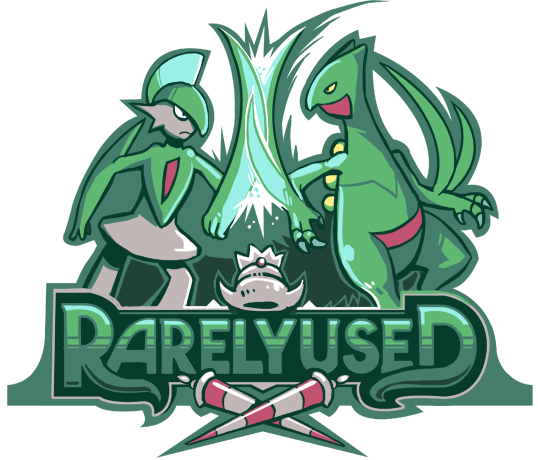

Threats in the Metagame
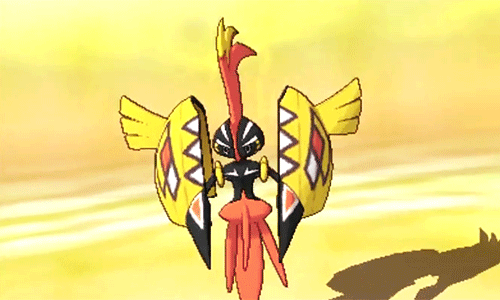
Abilities: Electric Surge
Base Stats: 105 HP / 140 Atk / 95 Def / 55 SpA / 65 SpD / 45 Spe
Tapu Koko is extremely fast, outspeeding all viable non-Mega Evolutions that aren't running Choice Scarf besides Pheromosa. Despite its average Special Attack stat, Electric Terrain gives it a very strong Thunderbolt. However, low power on its coverage moves makes it difficult for it to break past Pokemon that resist Electric. Its coverage, while not spectacular, has everything it needs to hit the vast majority of the tier. Its Fairy typing helps it defensively by giving it useful resistances to Fighting and Dark and an immunity to Dragon, letting it switch into Pokemon like Tornadus-T, Thundurus, and Weavile relatively easily. Electric Terrain provides minor team support by preventing Pokemon like Tangrowth and Amoonguss from putting its teammates to sleep and crippling opposing Tapu Lele and Bulu in a pinch.
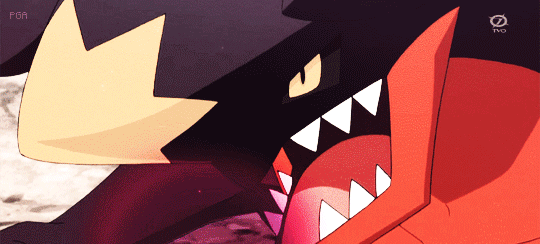 Type: Ground
Type: GroundAbilities: Rough Skin / Sand Veil
Base Stats: 105 HP / 140 Atk / 95 Def / 55 SpA / 65 SpD / 45 Spe
Tapu Koko is extremely fast, outspeeding all viable non-Mega Evolutions that aren't running Choice Scarf besides Pheromosa. Despite its average Special Attack stat, Electric Terrain gives it a very strong Thunderbolt. However, low power on its coverage moves makes it difficult for it to break past Pokemon that resist Electric. Its coverage, while not spectacular, has everything it needs to hit the vast majority of the tier. Its Fairy typing helps it defensively by giving it useful resistances to Fighting and Dark and an immunity to Dragon, letting it switch into Pokemon like Tornadus-T, Thundurus, and Weavile relatively easily. Electric Terrain provides minor team support by preventing Pokemon like Tangrowth and Amoonguss from putting its teammates to sleep and crippling opposing Tapu Lele and Bulu in a pinch.
 Type: Poison / Dark
Type: Poison / DarkAbilities: Poison Touch / Power of Alcemy
Base Stats: 105 HP / 140 Atk / 95 Def / 55 SpA / 65 SpD / 45 Spe
Alolan Muk has an excellent typing that provides 4 useful resistances and an immunity to Psychic, which combined with its good 100/105 special bulk makes it a safe switch-in to many Psychic-type Pokemon such as Tapu Lele and Mega Alakazam. STAB Pursuit allows Alolan Muk to effectively trap Psychic-types and either KO or severely cripple them on the switch. STAB Knock Off hits hard and complements Alolan Muk's Poison-type STAB moves by being able to cripple Steel-types. Muk has a respectable chance to spread poison by virtue of Poison Touch. This allows it to potentially cripple normally safe switch-ins before being forced out. It's incredibly weak to Ground-types, and has no real way to threaten them outside of removing their items with Knock Off. A lack of reliable recovery limits how much Alolan Muk can switch in, which hurts it as a pivot.
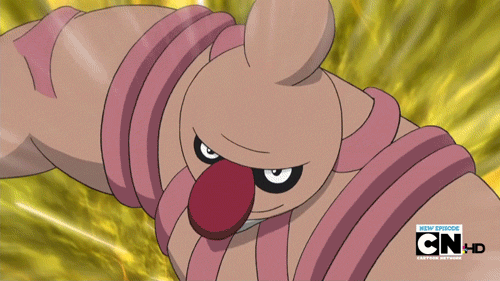 Type: Fighting
Type: FightingAbilities: Guts / Sheer Force / Iron Fist
Base Stats: 105 HP / 140 Atk / 95 Def / 55 SpA / 65 SpD / 45 Spe
Sporting the second-highest Attack of any non-Mega Pokemon in the tier as well as above-average bulk, Conkeldurr is a fearsome attacker capable of threatening many Pokemon in the tier. Conkeldurr also has three excellent abilities to choose from, as well as a deep movepool with a surprisingly large amount of coverage. Its access to good priority in Mach Punch in particular helps set Conkeldurr apart from other Fighting-type Pokemon in the tier, as it helps bypass Conkeldurr's low Speed and hits many threats to offensive teams such as Sharpedo and Cobalion for super effective damage. This patches up Conkeldurr's mediocre special bulk and allows it to be a formidable tank, taking hits while packing quite a bit of power. The rise of Fairies such as Azumarill and Clefable does get in Conkeldurr's way, but when it comes to a bulky Fighting-type, there is no Pokémon like Conkeldurr.
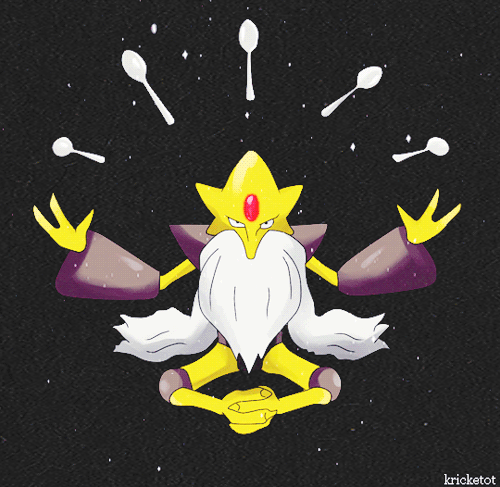 Type: Psychic
Type: Psychic Abilities: Synchronize / Inner Focus / Magic Guard
Base Stats: 55 HP / 50 Atk / 45 Def / 135 SpA / 85 SpD / 120 Spe
Alakazam, having been denied OU status for numerous generations, was finally bumped up in part thanks to a new ability, Magic Guard. Packing base 135 Special Attack as well as base 120 Speed and Psyshock to hit Chansey and Blissey, Alakazam is one tough cookie to handle. Its most common set is a Focus Sash one that aims to take advantage of Magic Guard, which prevents entry hazards, weather, and other residual damage from breaking the Focus Sash. Alakazam is used as a hit-and-run attacker and can be exceptionally difficult to handle without a proper counter. Shadow Ball, Focus Blast, and Hidden Power Fire or Energy Ball round out the set's coverage, enabling it to hit every Pokemon in OU for at least neutral damage. Substitute + 3 Attacks with a recoilless Life Orb thanks to Magic Guard is also a common set, with Substitute protecting it from priority.
 Type: Water/Flying
Type: Water/FlyingAbilities: Swift Swim / Water Absorb
Base Stats: 85 HP / 40 Atk / 70 Def / 80 SpA / 140 SpD / 70 Spe
An impressive base Special Defense stat combined with decent HP makes it scarily specially bulky. It checks many common threats such as Pheromosa, Mega Charizard Y, and Heatran due to its great typing. It's 4x weak to Electric, a great offensive type in the metagame, which often prevents it from providing utility. It's weak to Stealth Rock, which limits its ability to switch in and what it can switch in to. It's a momentum sucker, as it is slow and when forced out an ally has to take the hit. Roost and Scald are both obvious choices, giving Mantine longetivity and a way to damage and burn opposing pokemon. Mantine is a good defogger, because it is able to pressure many hazards setters thanks to its Scald STAB. Haze can be useful against pokemon such as SubCM Keldeo, Belly Drum Azumarill, Manaphy, SD Aegislash and SD Mega Scizor. Toxic can be used, if Haze or Defog are unnecessary. Mirror Coat is another option, giving Mantine the ability to KO pokemon such as Tapu Lele, Aegislash, Greninja, and Charizard-Y.

Abilities: Schooling
Base Stats: 45 HP / 140 Atk / 130 Def / 140 SpA / 135 SpD / 30 Spe
Taking its School Form as the original form, this Pokémon essentially is an Archeops with a more lenient condition and a less forgiving consequence. However, we can look at what School Form has to offer, and we see that there is plenty of it. For starters, Base 140 offenses and 45/130/135 defenses are nothing to laugh at, and it will take considerable effort to get this Pokémon into Solo Form. Furthermore, with a powerful STAB Hydro Pump and sufficient coverage options, this Pokémon is guaranteed to put a dent in something, at the very minimum. A Hydro Pump coming off of a 140 base Special Attack, with Ice Beam for coverage, is nothing to scoff at, especially if it is guaranteed to 3HKO Mew with maximum Special Defense investment. With 140 base Attack as well, Earthquake makes it easy to take care of problematic Steel-type Pokémon, and is notable for hitting Toxapex super effectively.

Abilities: Steadfast / Inner Focus / Justified
Base Stats: 55 HP / 50 Atk / 45 Def / 135 SpA / 85 SpD / 120 Spe
Alakazam, having been denied OU status for numerous generations, was finally bumped up in part thanks to a new ability, Magic Guard. Packing base 135 Special Attack as well as base 120 Speed and Psyshock to hit Chansey and Blissey, Alakazam is one tough cookie to handle. Its most common set is a Focus Sash one that aims to take advantage of Magic Guard, which prevents entry hazards, weather, and other residual damage from breaking the Focus Sash. Alakazam is used as a hit-and-run attacker and can be exceptionally difficult to handle without a proper counter. Shadow Ball, Focus Blast, and Hidden Power Fire or Energy Ball round out the set's coverage, enabling it to hit every Pokemon in OU for at least neutral damage. Substitute + 3 Attacks with a recoilless Life Orb thanks to Magic Guard is also a common set, with Substitute protecting it from priority.

Base Stats: 55 HP / 50 Atk / 45 Def / 135 SpA / 85 SpD / 120 Spe
Water Bubble prevents burns, halves Fire-type moves' damage, and doubles the power of Araquanid's Water-type moves. Put all these together with Water-type STAB, and Araquanid is going to deal serious damage even to Pokémon that resist Liquidation, and its offensive power cannot be easily hindered. Impressive Special Defense lets it tank strong hits, and even some super effective ones; for example, Nihilego's Power Gem after a Beast Boost only has a 50% chance to OHKO. Its low Speed lets it perform very well under Trick Room. Low offensive stats leave its other moves noticeably lacking in power. It's tough to be a Bug-type in a metagame with Tapu Koko, Kartana, and Tapu Fini, which can all easily counter it. Araquanid is rather easy to predict, as it only has one viable set.
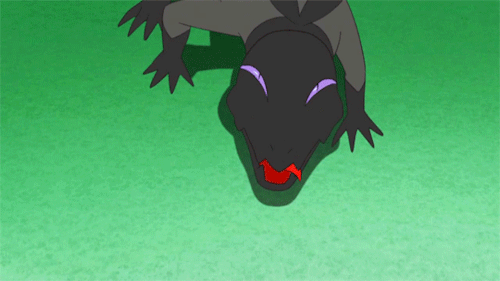
Abilities: Corrosion / Oblivious
Base Stats: 48 HP / 44 Att / 40 Def / 71 SpA / 40 SpD / 77 Spe
Salandit can make for a relatively good wallbreaker with its high Speed, good offensive typing, and good Special Attack. Its hidden ability, Oblivious, lets it set up Nasty Plot without needing to worry about being Taunted; getting Taunted is not a big problem for most set up sweepers in the first place, but it can be useful. However, Salandit's huge weakness to trappers largely holds it back from its full potential. It also has paper-thin defenses, being OHKOed by almost every super effective hit. But, despite its weaknesses, Salandit can shine through in the right scenarios. Nasty Plot is used to set up for a sweep. Sludge Bomb is Salandit's main Poison-type STAB move; its 100% accuracy can be very useful for guaranteed damage. Fire Blast is Salandit's Fire-type STAB move and is an extremely powerful move in general used to defeat many common Steel-types such as Ferroseed and Pawniard. Hidden Power Ground covers the Rock-types that Fire Blast and Sludge Bomb can't hit.
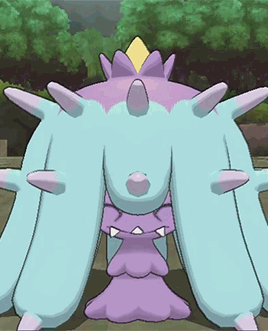 Type: Water / Posion
Type: Water / Posion Abilities: Synchronize / Inner Focus / Magic Guard
Base Stats: 50 HP / 53 Atk / 62 Def / 43 SpA / 52 SpD / 45 Spe
Alakazam, having been denied OU status for numerous generations, was finally bumped up in part thanks to a new ability, Magic Guard. Packing base 135 Special Attack as well as base 120 Speed and Psyshock to hit Chansey and Blissey, Alakazam is one tough cookie to handle. Its most common set is a Focus Sash one that aims to take advantage of Magic Guard, which prevents entry hazards, weather, and other residual damage from breaking the Focus Sash. Alakazam is used as a hit-and-run attacker and can be exceptionally difficult to handle without a proper counter. Shadow Ball, Focus Blast, and Hidden Power Fire or Energy Ball round out the set's coverage, enabling it to hit every Pokemon in OU for at least neutral damage. Substitute + 3 Attacks with a recoilless Life Orb thanks to Magic Guard is also a common set, with Substitute protecting it from priority.
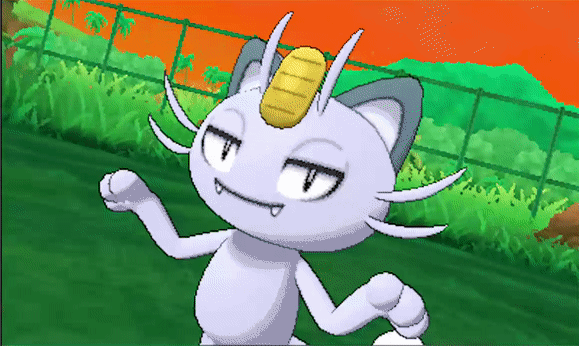
Abilities: Pickup / Rattled / Technician
Base Stats: 55 HP / 50 Atk / 45 Def / 135 SpA / 85 SpD / 120 Spe
Alolan-Meowth is a major threat in the LC tier. It is the fastest Parting Shot user and with Parting shot being able to change the momentum of a battle, Alolan-Meowth is a must.Parting Shot allows for Meowth to pivot around on teams, keeping up momentum. Dark Pulse is its strongest STAB attack. Hidden Power Fighting provides decent coverage alongside Dark Pulse. Taunt allows Meowth to block hazards from Dwebble and Surskit, though it is risky. Taunt can also block status moves, which can be turned into set up opportunities alongside Z-Memento. Thunderbolt allows Meowth have some offensive presence in the face of most Fairy-types

Abilities: Full Metal Body
Base Stats: 137 HP / 137 Att / 107 Def / 113 SpA / 89 SpD / 97 Spe
Solgaleo is able to counter many Xerneas variants by virtue of its typing and above average defensive stats. It has access to reliable recovery via Morning Sun, which is rare among Xerneas answers. An above average Attack stat allows Solgaleo to run offensive sets, KOing Xerneas after a bit of prior damage or putting it into range of priority moves. Its wide coverage allows it to hit the vast majority of the metagame for decent damage. It is able to deal with Deoxys-A well, countering variants that do not carry Knock Off. An excellent ability in Full Metal Body allows Solgaleo to avoid Attack and Speed drops from Intimidate and Sticky Web. Solgaleo is hindered by its weakness to Ghost-types, which leaves it vulnerable to being revenge killed by Mega Gengar. Weaknesses to Ground- and Dark-types, two of the most viable types in the tier, do not help Solgaleo's defensive utility. It lacks the power to break through some walls, as Steel / Psychic is not the best offensive typing in the metagame.
 Type: Normal
Type: Normal Abilities: Multitype
Base Stats: 120 HP / 120 Atk / 120 Def / 120 SpA / 120 SpD / 120 Spe
Alakazam, having been denied OU status for numerous generations, was finally bumped up in part thanks to a new ability, Magic Guard. Packing base 135 Special Attack as well as base 120 Speed and Psyshock to hit Chansey and Blissey, Alakazam is one tough cookie to handle. Its most common set is a Focus Sash one that aims to take advantage of Magic Guard, which prevents entry hazards, weather, and other residual damage from breaking the Focus Sash. Alakazam is used as a hit-and-run attacker and can be exceptionally difficult to handle without a proper counter. Shadow Ball, Focus Blast, and Hidden Power Fire or Energy Ball round out the set's coverage, enabling it to hit every Pokemon in OU for at least neutral damage. Substitute + 3 Attacks with a recoilless Life Orb thanks to Magic Guard is also a common set, with Substitute protecting it from priority.
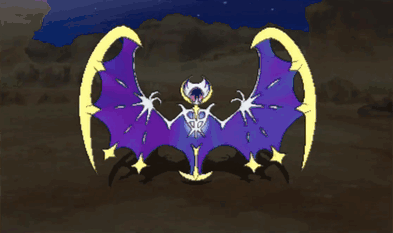
Abilities: Shadow Shield
Base Stats: 137 HP / 113 Atk / 89 Def / 137 SpA / 107 SpD / 97 Spe
Lunala has decent Speed and good Special Attack stats, making it an ideal wallbreaker. It possesses good coverage between its STAB moves along with options like Moonblast and Focus Blast. Shadow Shield reduces the damage Lunala takes by half if Lunala is at full HP, and it is not affected by Mold Breaker abilities, which gives Lunala fantastic bulk at full HP. While good offensively, Psychic / Ghost is among the worst defensive typings in the game. Due to its 4x weakness and lack of a powerful STAB move to deal with them, Lunala hates Dark-type Pokemon for their ability to do huge damage to it with ease while preventing it from spamming its STAB moves, although it does have the coverage options to beat most Dark-types in certain situations. Despite this, the immunities it does have enable it to be a good Choice Scarf Pokemon and have a good matchup versus offense. Lunala suffers from being just slower than some common threats, most noticeably Yveltal and Adamant Mega Lucario.
TYPES


Making Your Team
One of the biggest problems new team builders run into is that they don’t know where to start. Am I supposed to build around one Pokémon, two Pokémon, or a central idea? Everyone has their own way of building that they've been accustomed to, and for new team builders, all the different ways to build a team clouds the correct path to take. My proposal—and what we teach in Battling 101—is that new team builders be given "frameworks" to build their ideas out of. Therefore, you'd have frameworks for offense, balance, stall, etc. The biggest complaint that I get from people about frameworks is that it limits creativity. I just want to dispel that myth right away. First, I argue that the creativity starts with the initial idea. Whether that is a new and creative set or a Pokémon that is never used, the creativity resides in the starting point of your team. I just want to stress that I said "the starting point," as it's not necessarily your centerpiece. But I'll get more into that later. All that you have to remember is that most creativity in team building will take place even before you begin picking Pokémon.
Another critical point I want to get out of the way is the difference between frameworks and editing. Sometimes, these two phases can be misidentified in the teambuilding process, but they are different. A framework is the process I'm labeling the initial draft—nothing more, nothing less. Thus, initial frameworks can be either really good or really bad. Our goal, by using formulas, is to get that initial draft as close to the final product as possible. On the other hand, editing is everything after the initial draft. It's the phase where you tinker with the EVs or replace a Pokémon that doesn't seem to hold its weight.
Lastly, I don't claim to hold the best frameworks or formulas for each and every playstyle—not even my acclaimed heavy offense. In fact, my formulas are always changing. Whenever there is a shift in the metagame, certain roles become more useful than others. This prompts me to change them. Everyone has their own way of breaking down their team building process, even if they're oblivious to their own structures. Some are better than others. However, while I give my current formulas in this article, I want to stress that these aren't set in stone. Just because I say there should be a pivot in a balance team does not mean it's impossible for a balance team to function without a pivot. Whether it be from editing a role out or changing the actual formula itself, frameworks are and will forever be changing. The metagame doesn't stay static; why should your team building?
Creating Roles
Before we get started with the actual framework creation process, we need to prepare lists for each role. No matter what tier or generation you are in, you will be able to sort each Pokémon into specific roles. Each Pokémon can fit into one or multiple roles, so long as they are utilized in the same manner that they were placed. For example, if you slot a Dragonite as a sweeper, then it shouldn't be used turn two breaking the opponent's team. In this example, Dragonite could have been used as either a breaker or sweeper. Though this seems very tedious, you only have to do it one time per tier, and you can use it for all team building endeavors after. The most effective way that I've found to create lists is by using the threat list thread to identify all the major Pokémon in each tier, and then sorting them accordingly. It is important to go through this process slowly, as even if a Pokémon isn't generally used in one type of role, you can still find it useful in the future. For example, although Lucario is mainly used as a sweeper, you could use it as a lure with Hidden Power Ice, effectively taking out Gliscor for your main sweeper. It's best to just keep an open mind when slotting for each role. You never know when a particular resistance or ability to break a core will come in handy, especially if you're trying to build around something unorthodox. Lastly, not all Pokémon are listed on that threat list, so it's important that you also go deeper into the tier and find roles for each Pokémon. If you're playing in the BW UU tier, then looking in the BW RU tier is plausible, as there are likely some usable Pokémon, even if the majority of BW UU players don't use them.
Though this article is about the initial framework, the lists will also help in editing teams. If a particular Pokémon is not performing its duty, then using your lists you can find a Pokémon that fills the same role but also handles the weakness you want to cover. All in all, the lists just make team building more efficient and save a lot of time searching for Pokémon.
Offense
Lead Breaker 1 Breaker 2 Pivot Sweeper Speed
Even though leads aren't classified in the BW generation as much, they are still a useful role in offensive teams. These are usually the Pokémon that set up Stealth Rock, Taunt opposing entry hazards, or set up pivotal screens. I'm sure everyone knows the common leads (Azelf, Aerodactyl, etc.), but the key question is which lead to use. Don't they all do pretty much the same thing? There are three main factors you have to look at when choosing a lead. The first one is whether or not your team has a Stealth Rock weakness. If your team has Dragonite and Salamence, odds are you're going to be restricted to using a lead that has Taunt, such as Azelf. The second one is if you have a Ghost-type on your team. A lot of people overlook this one, but it's important to know if you're able to spinblock. If your team doesn't have a Ghost-type, then you're forced to run a lead that has a built-in spinblock. For example, you could run Explosion on Azelf to disable the opponent from using Rapid Spin. From there, you should be able to keep the pressure to not allow the opponent to spin away your hazards. Lastly, you need to be able to flow directly from your lead to your breakers. This is difficult to quantify, but the easiest way to factor this in is to play a fictitious battle out in your head. Simply imagine each lead attracting certain Pokémon and performing a certain course of action. After that, determine whether or not your breakers can maintain the pressure.
The role of breaker is defined as a Pokémon that either lures or puts pressure on Pokémon that wall your sweeper. A classic example of a lure is Fire Blast Garchomp. If your team has a Swords Dance, Rock Polish Landorus-T, then by luring Skarmory with Garchomp, you've effectively paved the way for a sweep. In contrast, if you were using the same Landorus-T set, but you wanted to put pressure on Skarmory (rather than lure it), then perhaps you'd use an Adamant Life Orb Terrakion. It is not required to pick one type or the other. As there are usually two breakers, it is common to use both types of breakers in one team. Though it may be tempting to use Choice Band or Choice Specs items here, it is best to use either Life Orb or Expert Belt. The unspoken rule is that you use Choice items when you have a fallback option (many pivots) and Life Orb or Expert Belt when you don't. The reason is that while you may deal more damage, the opponent is also able to deal damage back. You lose momentum every time you use a Choice item, which is the key thing to have in offensive teams. When you have multiple pivots, you're able to sponge the damage and reposition yourself accordingly, but that's in more defensive teams. Choice Scarf users are different, as they shouldn't be switching out. But that will be covered more in-depth in the "Speed" role.
There are only a select number of pivots in the entire game, as not many Pokémon possess the inherent moves required. Specifically, a Pokémon must have one of Baton Pass, Volt Switch, and U-turn. As mentioned earlier, pivots sponge damage, which allows you to reposition yourself to secure the momentum. Many people make the mistake of giving their pivot Speed, or not reducing the Speed. On all of my pivots, I change the nature to Speed-lowering one and reduce the Speed IVs to zero. If I happen to face an identical Pokémon, then I know I'll be able to get in the last pivot, which gives me the momentum.
Most of the Pokémon you slotted in for breakers will be usable as sweepers. It's not the inherent setup moves that make this role unique. Instead, it's how you utilize the Pokémon. If you use it at the beginning, rather than towards the end, then it is more of a breaker. That being said, you don't always have to use it after the breakers are all dead. The key is for all of the opposing counters of your sweeper to first be neutralized or in range for a kill. But remember in the battle which Pokémon are your breakers and which is your sweeper.
The reason why I classify the last role as "Speed" instead of "Scarf" is because there are Pokémon that are capable of cleaning up that aren't Choice Scarf users. The two most prominent are Sharpedo and Yanmega. Both are able to reach the high Speeds needed to finish off anything that wasn't already dealt with. However, the majority of Pokémon used in this role will be Choice Scarf users. This role can often be seen as the end-game sweeper. Though it is not called a sweeper, it is really the Pokémon that finishes off everything. The breakers weakened the counters for the sweeper. But the sweeper severely injured the counters, and then some. If the breakers and sweeper did their job, the "Speed" role just has to clean everything up. As there are many weakened Pokémon by the time it is sent in, Moxie Pokémon are particularly helpful in this role, as they only get stronger as they pick off more Pokémon.
I have also been experimenting with a slight variation. I have recently been using a Spikes lead, with my pivot carrying Stealth Rock. Of course, this isn’t exactly traditional "hazard offense," but I thought that my pivot in one team wasn't doing enough. So instead of limiting myself to Stealth Rock, with the rare occasion of one layer of Spikes getting on the field, I decided to split the duty up. This ended up allowing me to get much more hazards on the field.
Balance
Weather Breaker Utility Pivot Sweeper Speed
The four weather options are hail, rain, sun, and sandstorm. The important thing to remember is that at least one of your Pokémon needs to benefit from the weather. Balance is not stall. You're not trying to outlast the opponent with residual damage. Often, team builders try to stick random Pokémon in certain weathers, but they forget that there has to be something that benefits from it. Just because your sweeper is Scizor does not mean that rain should be your weather of choice. A logical reasoning would be to use Choice Scarf Keldeo on a rain team, as the cleanup sweeper would best do its job with a more powerful STAB attack. Just make sure there is a valid reason for the weather you choose.
The breaker in balance teams is like an evolved version of a breaker in offensive teams. Though breakers from offensive teams are still perfectly viable here, I often find myself venturing to more bulky Pokémon. Some of my favorite choices are Kyurem-B and Garchomp, both with Substitute. Of course, having breakers that apply pressure or lure are just as good in balance teams. However, having good resistances and bulk is helpful here, as unlike in offensive teams, you have somewhat of a defensive backbone. You're able to switch out the breaker that you sent in, instead of just suiciding it. It's a luxury in balance teams, but not required. In some cases, it may be better to go the more traditional route. For example, the bulkier breakers tend to have issues with stall teams. If this is the case, a lure may be a better option, as it lures the counter before it can set up hazards. Lastly, given that balance teams are more defensive, this also allows for the use of Choice Band and Choice Specs, as you now have more defensive presence to sponge attacks. Momentum isn't as much of an issue.
I really hate to label a role as "Utility," since it is absurdly vague. However, I have found that balance teams are able to run with either a more offensive or defensive edge. In the case of an offensive edge, it is like adding another breaker. There is one slight catch, though. The crux of this role is that it must fill in the gaps of your team. It should often be the last role that you figure out. For example, if you had a bit of an issue with Breloom, then adding a Latios would fill the requirement of beating Breloom while also adding an offensive twist. If you instead want to throw a defensive edge in, then adding a Pokémon that counters the threats that you want to deal with will suffice. Usually, the only times that I run with a defensive twist is if I have a number of threats I have to check with this one role. In this case, an offensive Pokémon wouldn't be able to deal with the amount of threats I'd have to cover. Again, this is the vaguest role, but I've found success in both types of variations.
The pivot, sweeper, and speed roles are all the same as on the offensive teams, but with some slight exceptions. First of all, Stealth Rock can be either on the pivot or the weather. Obviously, some weather Pokémon do not have access to Stealth Rock, so that would automatically be deferred to the pivot or a defensive utility. Lastly, the sweeper and speed roles benefit the most from being on a balance team. Though balance teams are usually heralded for being defensive, the best characteristic is its ability to use a weather role. Therefore, these two roles are usually much different than if they were in an offensive team.
Closing Comments
Now that I've given you the roles on both offensive and balance teams, the question remains: where should I start? As I said in the introduction, the beauty of these frameworks is that they don't deny you any creativity. Start where your inspiration for the team originated. You first need an idea before you can start building. If you originally wanted to build a team with lure Lucario, then figure out what benefits from Gliscor being dead. If you have an inventive new set for a pivot, figure out what type of team and weather would best benefit from it. Maybe certain breakers attract the use of that pivot, and it ends up allowing the team to flow really well.
Additionally, you might have noticed that I left out the framework on stall. Stall has been split into roles long before Obi dissected every piece of it in DPP. Though stall is rarely ever used anymore and is one of the most basic teams to build, it does spell out the fundamentals. It teaches you in plain English what Pokémon use Stealth Rock, Spikes, etc. There is no guessing which Pokémon are capable of doing a certain role, as they are inherently able to do so.
Everyone always complains that team building is so difficult. Well, after reading this article, you should be able to create a team in less than five minutes with the appropriate lists. The real challenge is coming up with an idea worthy enough to build around. Unfortunately, I have no framework for creativity.